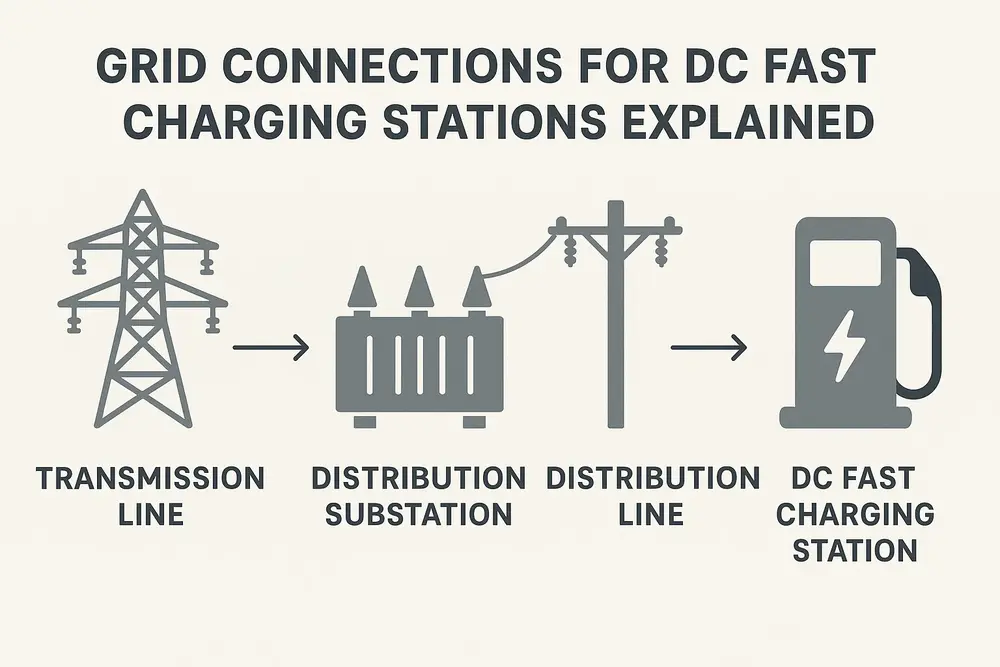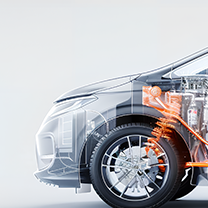
Products
Fast, Reliable, Everywhere

Solutions
Efficient, Innovative EV Charging Solutions.
Connecting a DC fast charging station to the electrical grid is a critical yet intricate process. These high-powered EV chargers depend on access to large-scale electricity infrastructure, which typically means integration with national or regional grids.
The electric grid is a vast system responsible for transmitting power from generation facilities to end-users. For fast charging stations to operate effectively, they require a secure and sufficient link to this grid. Establishing this connection, however, often involves navigating multiple regulations, coordinating with various stakeholders, and assessing site-specific feasibility.

DC fast chargers provide rapid energy delivery to EVs—often in excess of 50kW—making them essential for reducing charging time. Unlike AC chargers, DC stations almost always need a high-capacity grid connection unless supplemented by significant on-site generation. With EV adoption increasing globally, the demand for scalable, grid-integrated infrastructure is growing rapidly.
Before installing a DC fast-charging station, several factors must be evaluated:
How much energy will your site need to serve expected EV traffic? The number of chargers and the type (DC vs. AC) will influence your total load requirements. You’ll also need to determine whether the nearest substation can meet this demand.
Is there sufficient capacity on the local grid, or is it already heavily utilized by other businesses? While most grids can handle additional demand, future infrastructure developments may strain availability, especially in rapidly urbanizing or electrifying areas.
The further your site is from a suitable substation, the more costly and complex the connection becomes. Distance affects cable runs, trenching costs, and voltage loss, all of which impact ROI.
Identifying ideal locations requires leveraging both data and expertise:
GIS software can analyze multiple factors simultaneously, such as:
This helps create a shortlist of high-potential charging sites.
CPOs bring experience in infrastructure deployment and often maintain relationships with local utilities. Their input can streamline feasibility studies, design planning, and application processes.
Digital platforms, such as Grid Finder or utility-provided maps, offer visibility into grid layouts, allowing you to assess connection feasibility without a site visit.
Though processes vary by region and operator, establishing a grid connection typically involves:
In some countries, grid access is publicly regulated (e.g., the UK’s Ofgem), while others rely on private utilities. In Europe, CPOs are increasingly advocating for simplified, standardized permitting to accelerate infrastructure rollout.
While grid power is dominant, alternatives do exist:
Even so, most “renewable” charging sites still require a grid connection as backup or for load balancing during high demand or low generation periods.
Fast charging may seem energy-intensive, but modern grids are engineered to handle such loads. Experts, including Fastned’s Roland van der Put, note that when managed correctly, integrating charging stations into existing grid infrastructure can be both stable and predictable.
Successfully launching a DC fast-charging station depends on:
While the process can be time-consuming, careful planning and the right tools can significantly reduce delays and investment risks.
As electrification continues to reshape transportation and energy systems, effective grid integration remains at the heart of scalable EV charging infrastructure.
